




The first known public celebration of Ganesh Chaturthi is said to be between 1630 - 1680 during the rule of King Shivaji in Pune.
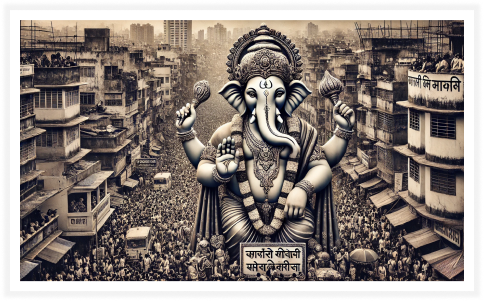


During the British rule, the festival lost its popularity but was revived by Bhausaheb Laxman Javale (popularly known as Bhau Rangari).
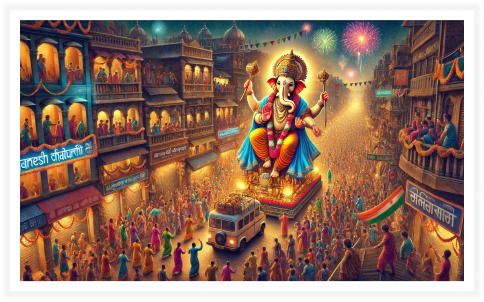


During the British rule, the festival lost its popularity but was revived by Bhausaheb Laxman Javale (popularly known as Bhau Rangari).

In Mumbai, the oldest Ganpati and Ganeshotsav has been recorded at Shree Sarvajanik Ganeshutsav Sanstha at Keshavji Naik Chawl, Khadilkar Road in Girgaon, which was started 132 years ago. Tilak, championed it as a means to circumvent the colonial British government ban on Hindu gatherings through its anti-public assembly legislation in 1892. Lokmanya Tilak started the festival in Pune and Girgaon, Mumbai.
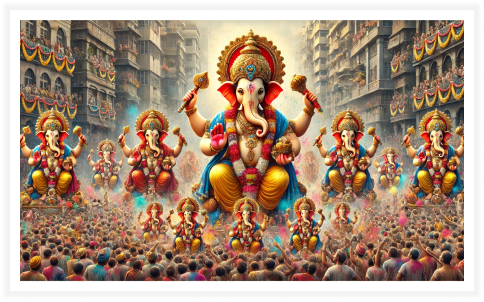


After seeing the potential in such large religious gatherings, and writing about it in his newspaper 'Kesari', Indian freedom fighter Lokmanya Tilak extended the celebrations throughout the Maratha region to make it popular and unite everybody in the celebrations that extended from Pune to Girgaum. In 1893, Tilak helped expand Ganesh Chaturthi festival into a mass community event and a hidden means for political activism, intellectual discourse, poetry recitals, plays, concerts, and folk dances.
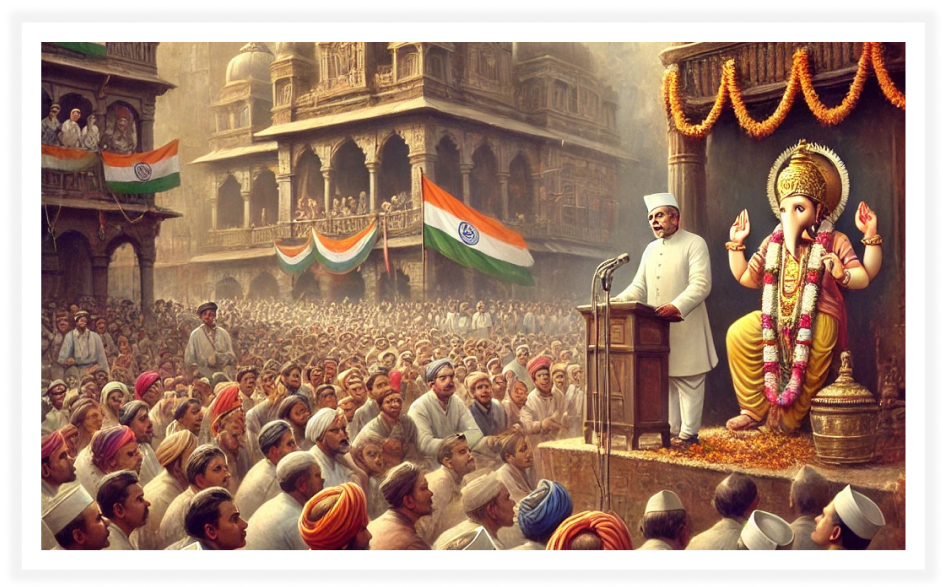


After seeing the potential in such large religious gatherings, and writing about it in his newspaper 'Kesari', Indian freedom fighter Lokmanya Tilak extended the celebrations throughout the Maratha region to make it popular and unite everybody in the celebrations that extended from Pune to Girgaum. In 1893, Tilak helped expand Ganesh Chaturthi festival into a mass community event and a hidden means for political activism, intellectual discourse, poetry recitals, plays, concerts, and folk dances.

Kasba Ganpati is considered the first Manacha Ganpati, or most revered Ganpati, in Pune. The idol was established in 1893 and is located in the Kasba Peth area of Pune, an ancient part of the city. It is patronised by Ganapati Bapurao Bebhan Durbar and is considered the presiding deity of Pune. In 1893, Bal Gangadhar Tilak initiated the now famous Ganesh Festival. His intention was to gather people sharing similar ideas and exchange thoughts to deal with the British ruler. He started celebrating Ganesh Festival from his own house called Kesari Wada. Due to his personal popularity and initiative, Ganesh Festival became a public festival soon afterwards.
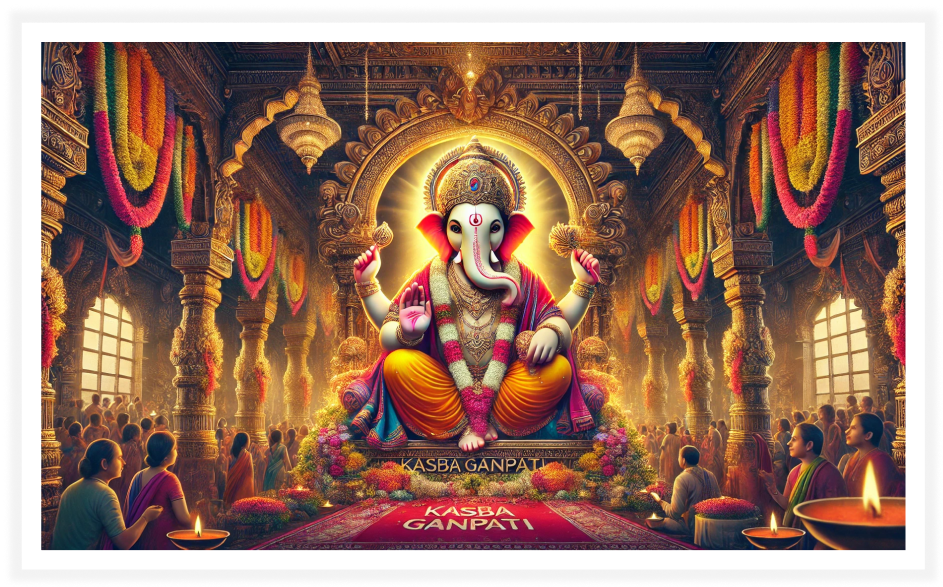


Many years after Ganesh Chaturthi became popular, the Lalbaugcha Raja was created at the Lalbaug market by the Koli community of the region. It was formed because of a vow to build the current marketplace in Lalbaug after the earlier one at Peru chawl was shut down.
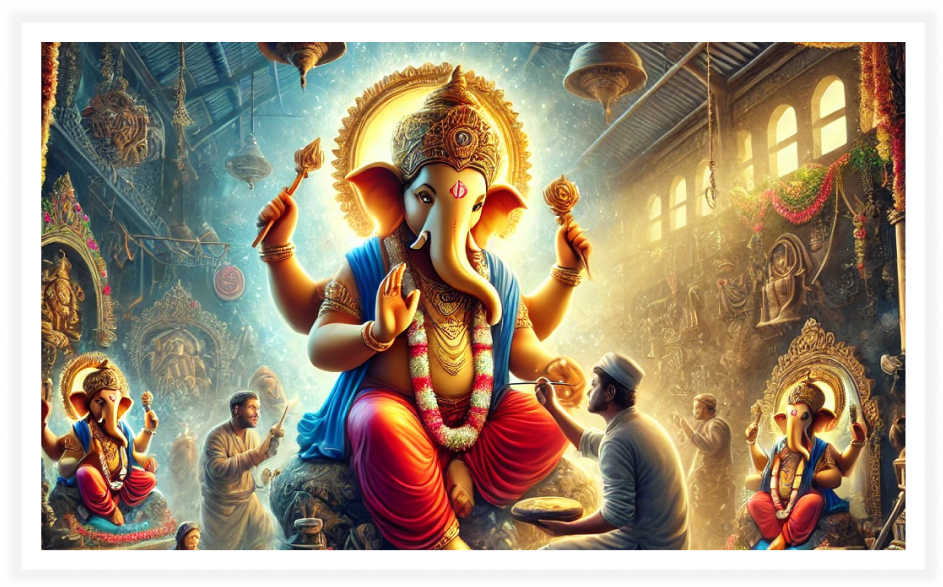


Many years after Ganesh Chaturthi became popular, the Lalbaugcha Raja was created at the Lalbaug market by the Koli community of the region. It was formed because of a vow to build the current marketplace in Lalbaug after the earlier one at Peru chawl was shut down.


Maharashtra is the epicentre of Ganpati festival celebrations. It is celebrated on a grand level in cities like Mumbai, Pune and Nashik with huge Ganpati idols and pandals on almost every street. Dhol tasha pathaks also perform in the celebrations. People bring small Ganesh idols home and perform special poojas and aarti. Modak, the most famous sweet dish associated with the festival, is prepared and distributed.
Ganesh Chaturthi is also known as ‘Chovath’ in Goa. The villages of Cumbharjua, Marcel and St Estevan bring in giant Ganpati idols and images. The celebration at Cumbharjua is very significant as the Ganesh immersion is held on the seventh day on the occasion of Sangod, which involves a colourful procession of small canoes and boats. In Goa, Ganesh Chaturthi is celebrated with a blend of Maharashtrian and Konkani traditions. Families create beautiful handmade clay idols and the festivities include traditional music, dance, and Goan cuisine.
Often called ‘Lamboodhara Piranalu’, Ganesh Chaturthi in Kerala is celebrated with much fervour. During the 10 days of Ganesh Chaturthi, the idol of the God is worshipped in temples. There are special poojas and offerings made to Lord Ganesha on these festive days. In Kerala, the celebrations include a grand procession where the idol is taken on a boat across the backwaters, accompanied by traditional Chenda melam (drumming).
The festival is observed as ‘Vinayaka Chathurthi’ or ‘Pillayar Chathurthi’ in Tamil Nadu. The ritual involving the immersion of Lord Ganesha idols is known as Ananta Chaturdashi. Devotees in the state prepare Kozhukattai (rice flour dough stuffed with jaggery and coconut), which is known to be Lord Ganesha’s favourite sweet dish. Pran Pratishtha, Shodashopachara, Uttar Puja and Ganpati Visarjan are the four rituals associated with the festival.
In Karnataka, Ganesh Chaturthi, also known as Ganesha Habba, is celebrated both in homes and in community spaces. Many families in Karnataka make their own Ganesh idols using eco-friendly materials like clay. In Karnataka, idols are often immersed in local wells or lakes. A unique tradition in Karnataka is the worship of the underground Ganesh idol in Kanipakam for 21 days. The idol is believed to have emerged from the earth and continues to grow, and it is partially submerged in water year-round. This temple sees a significant influx of devotees during Ganesh Chaturthi. Kanipakam Vinayaka Temple was constructed in the early 11th century CE by the Chola Emperor Kulottunga I and was expanded further in 1336 by the Emperors of Vijayanagara.
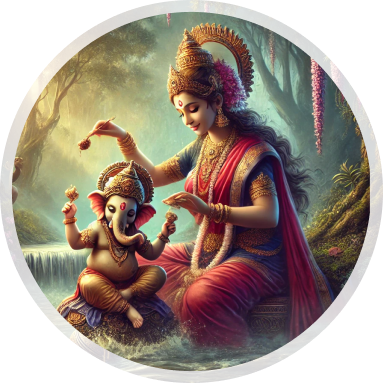
The birth of Lord Ganesha is believed to have happened when his mother, Goddess Parvati, carved an idol of a boy out of turmeric powder and breathed life into it, without letting her husband Lord Shiva know about it. According to Hindu mythology, Goddess Parvati created Ganesha from the sandalwood paste she used for her bath. She breathed life into him and set him to guard her while she bathed. When Lord Shiva, Parvati’s husband, tried to enter, Ganesha stopped him, unaware of who he was. This led to a fierce battle, during which Shiva beheaded Ganesha. Upon realising Ganesha's identity and Parvati’s grief, Shiva resurrected him by placing an elephant’s head on his body. This story is a central theme in many Ganesh Chaturthi celebrations in Karnataka, symbolising the birth of Ganesha and his rise as the remover of obstacles.
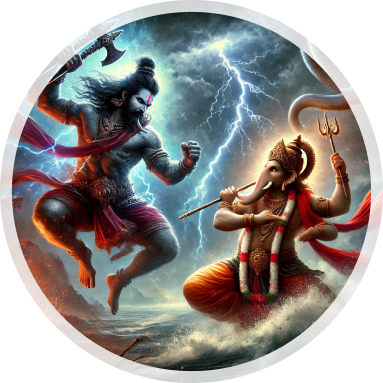
Ekadanta, meaning "the lord who has only one tusk," is another name for Ganesh. There are several stories about how Ganesha broke his tusk. One popular tale tells that Ganesha broke his tusk to use it as a pen to write the epic Mahabharata as dictated by Sage Vyasa. Another story suggests that during a confrontation with Parashurama, Ganesha allowed his tusk to be broken out of respect for the weapon Parashurama used, which was given to him by Shiva. The broken tusk symbolises sacrifice and selflessness, qualities celebrated during Ganesh Chaturthi.
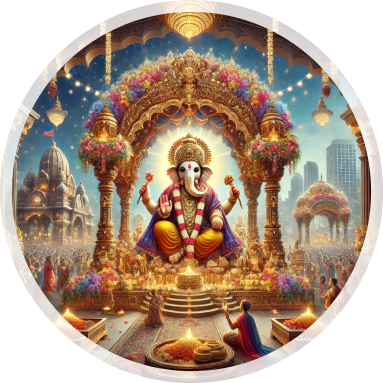
In the year 1630, the Maratha Aristocrat and wife of Sardar Shahaji Bhosale, Jijaubaisaheb Bhosale arrived in Pune with her then infant son, Chhatrapati Shivaji maharaj, the founder of Maratha Empire. Around this time, along with other seven families, the Thakar Family migrated to Pune from the village of Indi, Bijapur district in present-day state of Karnataka. Shri Vinayak Bhatt Thakar also carried his Family deity, Lord Gajanan along with him. All these families settled near River bank around the current place of Kasba Ganapati Temple which was close to the residence of Jijabai. Jijabai perceived this as an auspicious moment and promptly decided to build a temple, which is popularly known as the Kasba Ganpati Mandir. Since then, Pune is also known as the city of Ganesh. The Peshwas were ardent followers of Lord Ganesh. During their regime Shaniwarwada witnessed grand celebrations for Lord Ganesh.